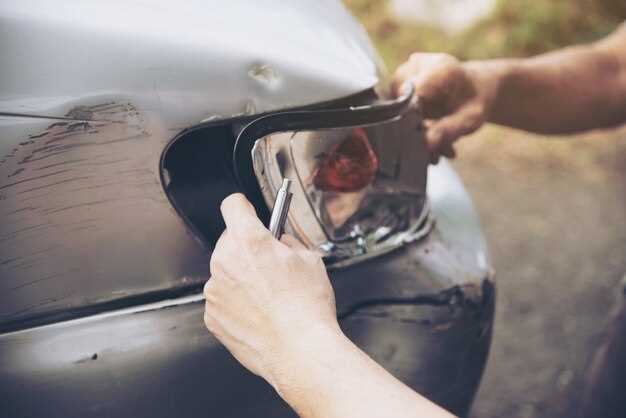
A chipped windshield can be a common inconvenience for many vehicle owners, yet understanding the available options for repair or replacement is essential for maintaining safety and visibility on the road. Over time, even a small chip can develop into a more significant crack if not addressed promptly. This article aims to clarify the differences between windshield chip repair and replacement, helping you make an informed decision that suits your needs and budget.
When a chip occurs, the immediate reaction is often to question whether to repair or replace the windshield entirely. Repairing a chip can be a cost-effective and quick solution, typically taking less than 30 minutes to complete. However, not all chips are created equal; factors such as size, depth, and location play a crucial role in determining whether repair is feasible. Understanding these factors is vital to ensure you’re not only addressing the cosmetic issue but also enhancing the structural integrity of your windshield.
On the other hand, if the damage is extensive, a windscreen replacement may be the only viable option. Replacement involves removing the entire windshield and installing a new one, which, while more expensive and time-consuming, guarantees a safe driving experience. This article will explore both these options in detail, providing you with the knowledge to navigate a decision that prioritizes safety without compromising on quality.
Identifying When to Repair or Replace a Windshield Chip
Determining whether to repair or replace a windshield chip involves several key factors. The size and location of the chip play a crucial role in this decision-making process. Generally, chips smaller than a quarter in diameter can be repaired effectively, while larger chips often necessitate replacement.
Location is equally important. Chips located directly in the driver’s line of sight may impair visibility, making replacement the safer option. Additionally, chips near the edges of the windshield can compromise structural integrity, which may warrant a complete replacement as opposed to a repair.
Another critical factor is the type of damage. If the chip has cracks extending from it, or if it is a star-shaped or combination chip, repair might not achieve a satisfactory result. In such cases, replacement is advisable to ensure safety and maintain vehicle integrity.
The age of the damage can also influence the decision. If the chip has been present for an extended period, it may have accumulated dirt and moisture, making repair less effective. In contrast, more recent chips are often easier to fix.
Lastly, consider the cost and warranty implications. Repairing a windshield chip is typically less expensive than replacement. However, if the chip compromises your vehicle’s safety, opting for replacement could save on future repairs and potentially protect you from accidents.
Step-by-Step Guide to the Windshield Chip Repair Process

Repairing a windshield chip is a straightforward process that can restore your glass and improve visibility. This guide outlines the key steps involved in repairing a chip effectively.
Step 1: Assess the Damage
Start by thoroughly inspecting the chip. Determine the size and type, as well as the depth of the damage. Chips smaller than a quarter are typically repairable, while larger cracks may require a full replacement.
Step 2: Gather Necessary Tools and Materials
You will need a windshield repair kit, which usually includes resin, an applicator, a suction cup, and a razor blade. Ensure that the kit is suitable for the type of chip you are repairing.
Step 3: Clean the Area
Use a microfiber cloth to clean the windshield around the chip. Remove any dirt, dust, or debris, as these can affect the adhesion of the resin. It is essential to work with a clean surface for optimal results.
Step 4: Apply the Suction Cup Tool
Position the suction cup tool over the chip. Press down firmly to create a seal, ensuring that the chip is centered in the tool. This will help draw air out of the crack during the repair.
Step 5: Inject the Repair Resin
Using the injector from the repair kit, carefully inject the resin into the chip. Be sure to fill the chip completely to eliminate any air pockets. Follow the instructions provided with your kit for the best results.
Step 6: Allow the Resin to Cure
After injecting the resin, allow it to cure. This typically takes about 10 to 15 minutes, depending on the product used. Make sure the area is not disturbed during this time to ensure proper curing.
Step 7: Remove the Tool and Clean Excess Resin
Once the resin has cured, gently remove the suction cup tool. Use a razor blade to scrape off any excess resin from the windshield’s surface, ensuring a smooth finish and preventing distortion.
Step 8: Final Inspection
Inspect the repaired chip to ensure that the resin has filled the chip properly and that visibility has improved. Check for any remaining air bubbles or imperfections and address them accordingly.
Step 9: Protect the Repair Site
To maximize the longevity of your repair, consider applying a UV-resistant sealant over the area. This will help protect the resin from UV degradation and ensure the repair maintains its integrity.
Following these steps will help you achieve a successful windshield chip repair, restoring safety and clarity to your driving experience.
Cost Analysis: Comparing Repair and Replacement Expenses
When faced with a windshield chip, deciding between repair and replacement involves understanding the associated costs. This section breaks down the financial implications of each option to help you make an informed choice.
Repair Costs
Windshield repair is generally the more economical option. The average cost for a professional repair ranges from $50 to $150, depending on various factors:
- Location: Prices can vary by region due to cost of living and local market conditions.
- Size and Type of Chip: Smaller chips and cracks are typically less expensive to repair.
- Service Provider: Pricing can differ between dealerships, independent shops, and mobile repair services.
Insurance may also cover most or all of the repair cost, especially if you have comprehensive coverage. Contacting your insurance provider can clarify potential out-of-pocket expenses.
Replacement Costs
Replacing a windshield is significantly more costly than repairing it. The average price for a full windshield replacement ranges between $200 and $1,000. Factors influencing the cost include:
- Make and Model of the Vehicle: Luxury and rare vehicles often command higher replacement prices.
- Type of Glass: Original equipment manufacturer (OEM) glass tends to be more expensive than aftermarket options.
- Labor Costs: The complexity of the installation process can lead to variations in labor fees.
Similar to repairs, insurance can help cover replacement costs. However, you may still be liable for a deductible, which can range from $0 to several hundred dollars.
Additional Considerations
While cost plays a crucial role in the decision-making process, other factors should be taken into account:
- Time: Repairs are often quick, taking less than an hour, while replacements might require more time to ensure proper installation.
- Long-term Safety: A repaired windshield must meet certain safety standards; if a chip is too large or in a critical area, replacement might be necessary for structural integrity.
- Aesthetic Impact: While repairs can be nearly invisible, some replacements may not match perfectly, impacting the vehicle’s appearance.
In conclusion, while windshield repair typically involves lower costs and quicker service, replacement may be the only viable option for severe damage. Assess your specific circumstances, considering both financial and safety perspectives before making a decision.

